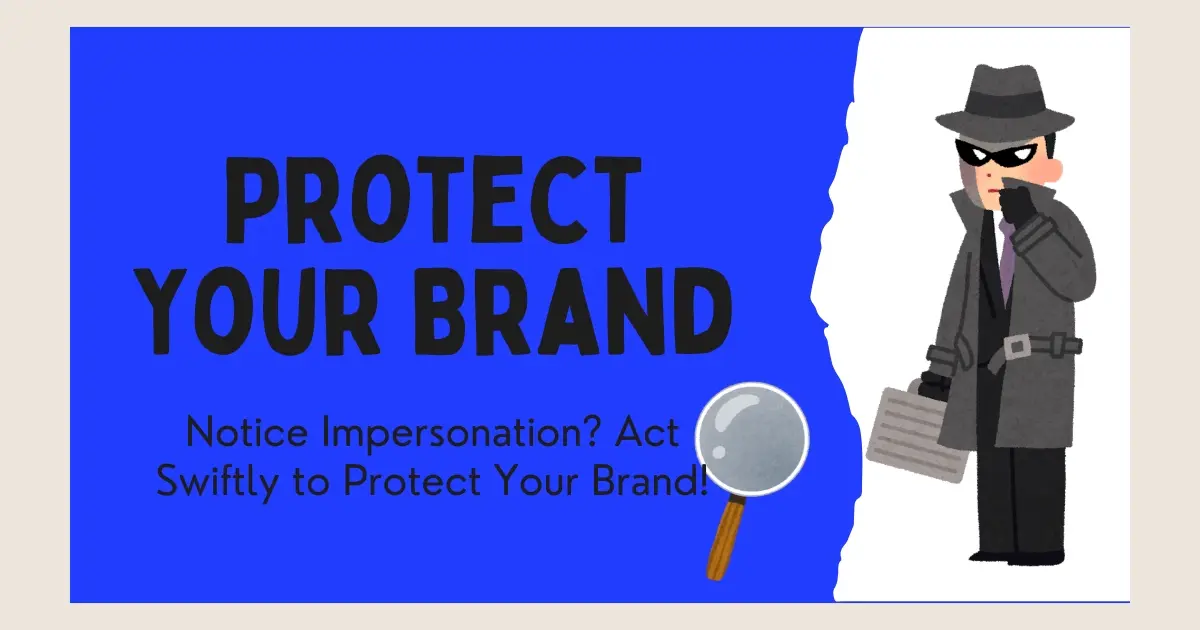Imitating something others own in business costs a lot for original entrepreneurs. I can’t tell you how many times I come across a portable storage business who has been impacted by someone pretending to be their business online and then getting blamed when the customer never receives their unit.
Many businesses have caught wind of this trend and have actively taken measures to mitigate this, however, the problem is still rampant.
We’ll explore what steps you need to take if another business tries to impersonate yours online. Learn how to identify the threat and legally protect your brand forever.
What is Business Impersonation?
Business impersonation is a fraudulent practice where someone poses as a legitimate business to deceive others. These imposters aim to exploit the trust of the genuine company to gain their advantages. This can be financial, stealing information, or damaging the original business’s reputation.
Identifying Online Impersonation
Recognizing that someone is impersonating your business is the first step in protecting your brand. Here are some key signs to watch out for.
Similar Domain Names
Impersonators register domain names that closely resemble your business’s official domain. For example, if your website is www.portablestoragepro.com, an impersonator might register at www.portablestoragepros.com or www.portablestoragepro.co
These slight variations can easily trick customers into thinking they are interacting with your legitimate site.
Fake Social Media Profiles
Social media impersonation is the easiest and most common form of identity theft. They create social media accounts using your business’s name, logo, and branding to appear legitimate. These fake profiles might reach out to your customers, post misleading content, or run scams that damage your reputation.
Copycat Websites
Some impersonators go as far as creating entire websites that look almost identical to yours. They may copy your website’s design, content, and even your product offerings. These copycat sites are designed to deceive customers into thinking they are interacting with your business when they are actually dealing with a fraudster.
Suspicious Customer Inquiries
If you start receiving unfamiliar inquiries, it may signal someone impersonating your business. Customers might mention promotions, emails, or services that you never offered. This is a clear sign that someone is falsely representing your business.
Unfamiliar Reviews or Ratings
Be cautious if you notice negative reviews on platforms like Google or Yelp for services you didn’t provide. Fake businesses fail to deliver on their promises and they don’t want to. This obviously reflects in reviews that can unfairly destroy your reputation.
Responding to Impersonation
Dont worry too much when you discover someone impersonating your business. You can move to the following steps to protect your brand and mitigate any damage.
1. Document the Impersonation
It’s crucial to gather as much evidence as possible to support your case before taking further action. Take screenshots, save relevant web pages, and collect any other evidence that proves the impersonation. This can include exact URLs, Emails, Messages, Customer Testimonials or Complaints.
2. Contact the Platform
Once you have documented impersonation, the next step is to report it to the appropriate platform. Most platforms have established procedures for dealing with impersonation, and acting quickly minimizes damage.
Social Media
Facebook & Instagram: Navigate to the fake profile and use the “Report” feature. Choose “Pretending to be Someone Else” and follow the prompts. Provide as much information as possible, including the evidence you’ve gathered.
X (Previously known as Twitter): Report the account by selecting “It’s pretending to be me or someone else” in the report options. X might ask for additional details, so be ready to provide them.
Linkedin: Go to the profile and select “Report/Block” from the dropdown menu. Choose the option that best describes the issue and submit your report.
Websites
Domain Registrars: Check if impersonation involves a website with a similar domain name. Contact the domain registrar (e.g., GoDaddy, Namecheap) and report the violation. Provide details to prove that the domain is infringing on your brand.
Hosting Providers: If you know the hosting provider of the impersonator, you can contact them to report the site. Hosting providers often have policies against hosting fraudulent or infringing content.
Search Engines
Google: You can report a fake website using Google’s “Report Phishing Page” tool or “Remove Outdated Content” tool. Provide evidence for your claim, and Google will remove the site from its search results.
Bing & Others: Similarly, you can report fraudulent content to other search engines using their respective tools and processes.
Involve Legal Counsel
Do you think the impersonation is causing significant harm, or do you believe legal action is necessary? You can consult a lawyer specializing in intellectual property or online fraud. Your attorney can advise you on the best action, including legal remedies.
Protecting Your Business
Registering Your Domain Name and Trademarks
Registering your domain name and trademarks is a basic step in protecting your business. This ensures only you have exclusive rights to use that specific web address. Impersonators step back from copying registered businesses more than others.
Registering your trademarks provides legal protection against unauthorized use of your brand identity.
Setting Up Google Alerts
Google Alerts is a tool for monitoring online mentions of your business name. You can receive notifications whenever your business is mentioned online by creating alerts. This allows you to identify and address any impersonation attempts quickly.
Using Social Media Monitoring Tools
Social media platforms are a breeding ground for impersonation. Use monitoring tools to track mentions of your business across platforms. You can detect fake profiles and respond to impersonation incidents. These tools also provide insights into public sentiment and help you identify threats to your brand.
Conclusions
Impersonation is a severe threat to businesses present online. The wide opportunities for impersonators on the web demand entrepreneurs to be vigilant. You can use verification badges on social platforms to authenticate your business. Maintain a consistent brand identity across all your online channels for audience awareness about your business.

